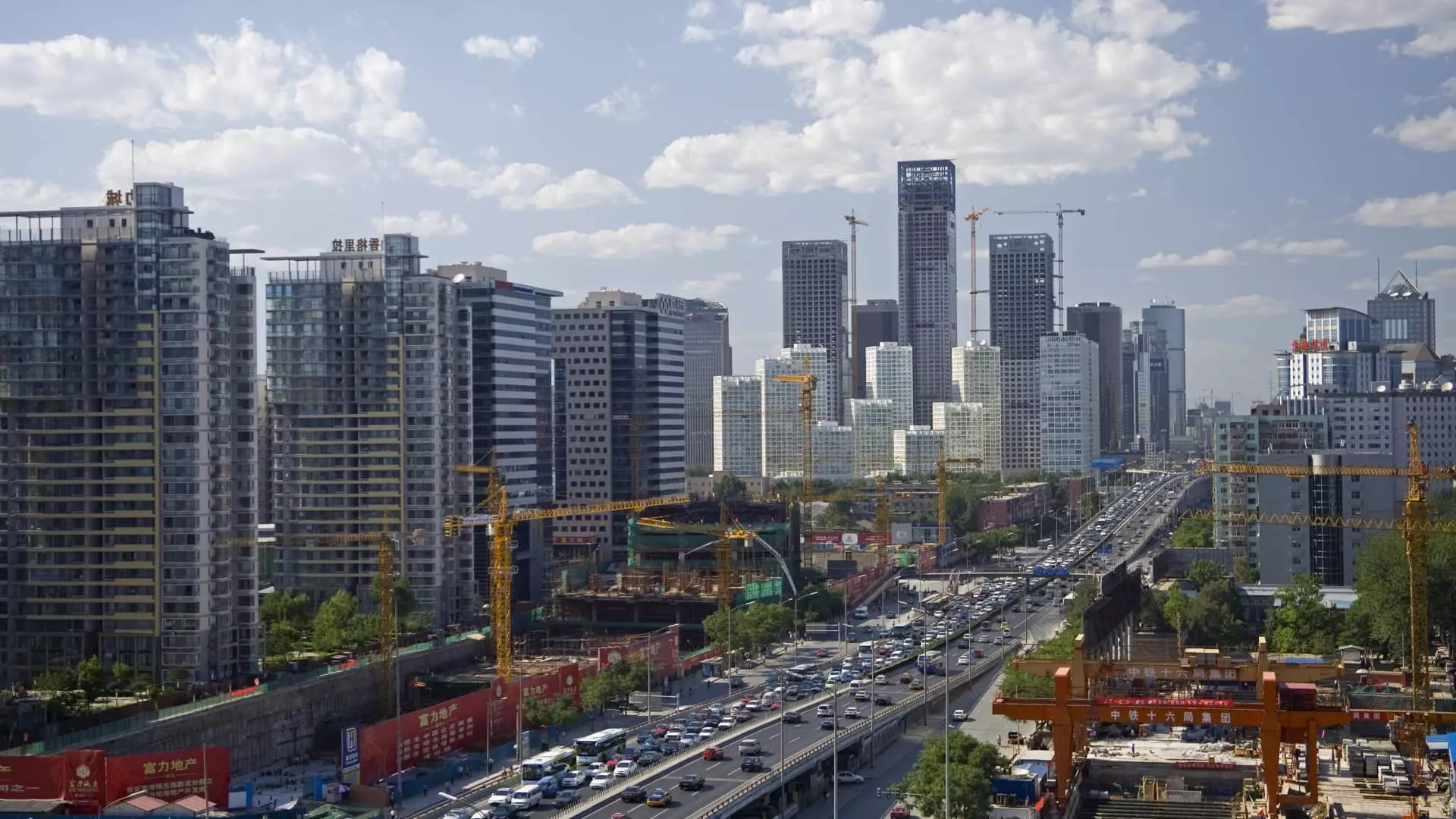China’s economy has shown unexpected resilience, boasting a GDP growth of 5.4% in the first quarter of the year, contrasting sharply with the pessimistic predictions of major investment banks that have lowered their annual growth forecasts due to escalating trade tensions with the United States. This growth surpasses analysts’ expectations of 5.1%, highlighting not just a recovery but a resilient undercurrent motivated by a broad policy stimulus initiated late in 2024. This data, released by the National Statistics Bureau, illustrates how government interventions can yield momentary economic booms, but they hardly provide a panacea for the underlying challenges facing the Chinese economy.
Retail sales indicated a similar optimistic note, surging by 5.9% year on year in March, far exceeding the anticipated 4.2% rise. Such figures may suggest consumer confidence is rebounding, yet they mask a deeper reality: the foundations of consumer spending remain fragile and insufficient to sustain long-term economic health. Industrial output fared well, increasing by 7.7%, reflecting a government-driven push towards revitalization; however, these numbers fall short of addressing the critical structural issues that plague China’s economic landscape.
The Troubled Real Estate Sector
Beneath the surface of these seemingly positive statistics lies a troubling development within fixed asset investment, particularly in the real estate sector. A staggering 9.9% decline reflects a significant retreat in an area traditionally seen as a backbone of China’s economic engine. While infrastructure and manufacturing investments have picked up, the overall drag from real estate demonstrates the fragility of China’s growth narrative. Housing, once a formidable driver of economic expansion, appears to be on life support, with major ramifications for the broader economy.
The urban unemployment rate, now at 5.2%, seems encouraging compared to February’s peak of 5.4%. However, this slight improvement raises questions about the quality of jobs being created and whether they offer genuine economic stability for millions of workers. The statistics bureau may paint a picture of a stable start to the year, but there are undeniable cracks in the edifice that could threaten future growth, particularly in an increasingly complex global environment that is seemingly hostile to China.
Innovation Amidst Adversity
The narrative of innovation is a recurring theme in discussions of China’s economic prospects. The emergence of AI startups like DeepSeek, which contends with the likes of OpenAI, offers a glimmer of hope. Innovation could be the key to China’s future economic competitiveness; still, it remains reliant on an educational system that nurtures creativity rather than conformity. If these nascent sectors are to flourish, they must be nurtured within an environment that encourages risk-taking rather than stifling it through excessive bureaucracy.
Despite these positive developments in technology, the statistics bureau has warned of an increasingly “complex and severe” external environment, hinting that domestic demand remains a persistent weakness. This lack of internal consumption could negate any progress made through innovation, leading to dependency on export-driven growth—an outdated model in a rapidly changing global economy.
The Tariff War’s Dark Shadow
The growing trade war with the United States casts a long shadow over China’s economic optimism. As tariffs imposed by the U.S. reach unprecedented levels of 145%, the retaliatory measures have also escalated, further isolating China in the global trade landscape. Morgan Stanley’s economists have voiced concerns that as tariffs aggressively bite into exports, growth will likely deteriorate swiftly; they suggest that China’s economy could falter by as much as two-thirds in the coming quarters. There is a disconcerting sense of inevitability surrounding the impact of these tariffs, forcing policymakers to scramble for solutions amidst escalating chaos.
Calls for more proactive and effective macro policies are rising, suggesting that merely relying on government stimulus is a short-sighted strategy. While investment banks, like UBS Group, project a dire 3.4% growth for 2023, such forecasts accentuate the urgency for structural reforms geared toward diversifying the economy, reducing reliance on exports, and enhancing domestic consumption.
The Road Ahead: A Call for Action
There is a palpable tension in the air—a realization that without significant changes to economic strategy, the country’s ambitions may remain unfulfilled. Economists advocate for frontloaded monetary easing, which sounds promising but masks the complex realities governing China’s economy. The necessity for enhanced fiscal stimulus is clear, yet wants for fresh thinking were manifested; more than a stopgap response is required to navigate the headwinds of rising tariffs and sluggish domestic consumption.
While China’s preliminary data reflects a surprising vigor in growth, the overarching narrative remains one of caution. Innovation, the external trade environment, and the persistent weakness in domestic demand suggest that the road ahead will not only be fraught with challenges but may also redefine the trajectory of China’s economic narrative for years to come. Will the government heed the call for profound changes? Only time will tell, but the stakes have never been higher.


Leave a Reply